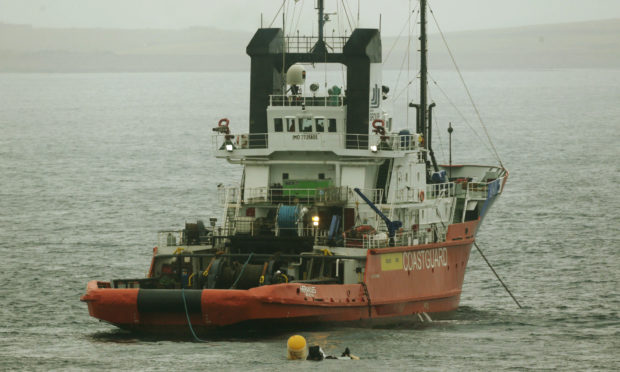A survivor of a horror helicopter crash at sea has told how “training kicked in” to enable him to escape from the submerged aircraft and then attempt to save another passenger.
Matthew Bower, 31, was one of 16 offshore workers on the CHC Super Puma helicopter which ditched in the Atlantic Ocean seven years ago, two miles from Sumburgh Airport in Shetland.
Four people died in the tragedy, which took place in low cloud on August 23, 2013.

Mr Bower, who was working as a chemist on oil platforms at the time of the crash, told a fatal accident inquiry that routine submersive pool training had saved his life.
He described how he sat opposite the “bubbly” Sarah Darnley and spoke to her prior to the crash, but later learned the 45-year-old from Elgin had tragically died.
He went on to attempt to save 59-year-old Gary McCrossan, of Inverness, who had also managed to escape the submerged helicopter, but then suffered a heart attack while on a life raft.
Mr Bower was sitting directly behind the pilots, facing towards the rear of the helicopter.
He said he had fallen asleep during the flight but when he woke he saw Sarah Darnley in a “panicked” state.
Mr Bower said: “It was quite clear she was worried about something.”
He said the helicopter lurched from one side to the other and he saw the sea out of the window, approaching them quickly.
“We were in dense cloud,” he told the inquiry.
“There was some sort of movement which brought me out of my sleep.
“Sarah was opposite me and looked quite panicked. I remember Sarah. She was quite a bubbly character.
“I did not know her previously but in only a few minutes saw her as quite an extrovert.
“Very, very quickly there was this lurching. We seemed to drop out of the cloud. The sea was significantly closer than expected.
“It was quite clear we were falling. I remember the sea coming towards us quite quickly.
“It seem the chopper had lurched to one side and the pilot was trying to right it. We were lurching left to right.”
Mr Bower said he went into the brace position and as the helicopter instantly began to fill with water, he added: “This is when your training kicked in.”
He managed to open the window next to him and escape, and quickly managed to get onto the underbelly of the helicopter.
Joined by other passengers, he managed to get in one of two life-rafts that had inflated.
He said: “I was helping people onto the liferaft.”
On that raft was Mr McCrossan, who he saw had started to suffer from a heart attack.
He and another survivor attempted to save his life, but he said there had been no signs of life and Mr McCrossan was then airlifted by a search and rescue helicopter.
Mr McCrossan was later pronounced dead.
Mr Bower told the inquiry that pool training simulation, which was compulsory every four years, had “saved my life”.
He was clear that while his hobby was open water swimming, “the training got me out of the helicopter”.
“I believe the training save my life. My hobby, perhaps, helped afterwards, more than others who were suffering from shock.”
